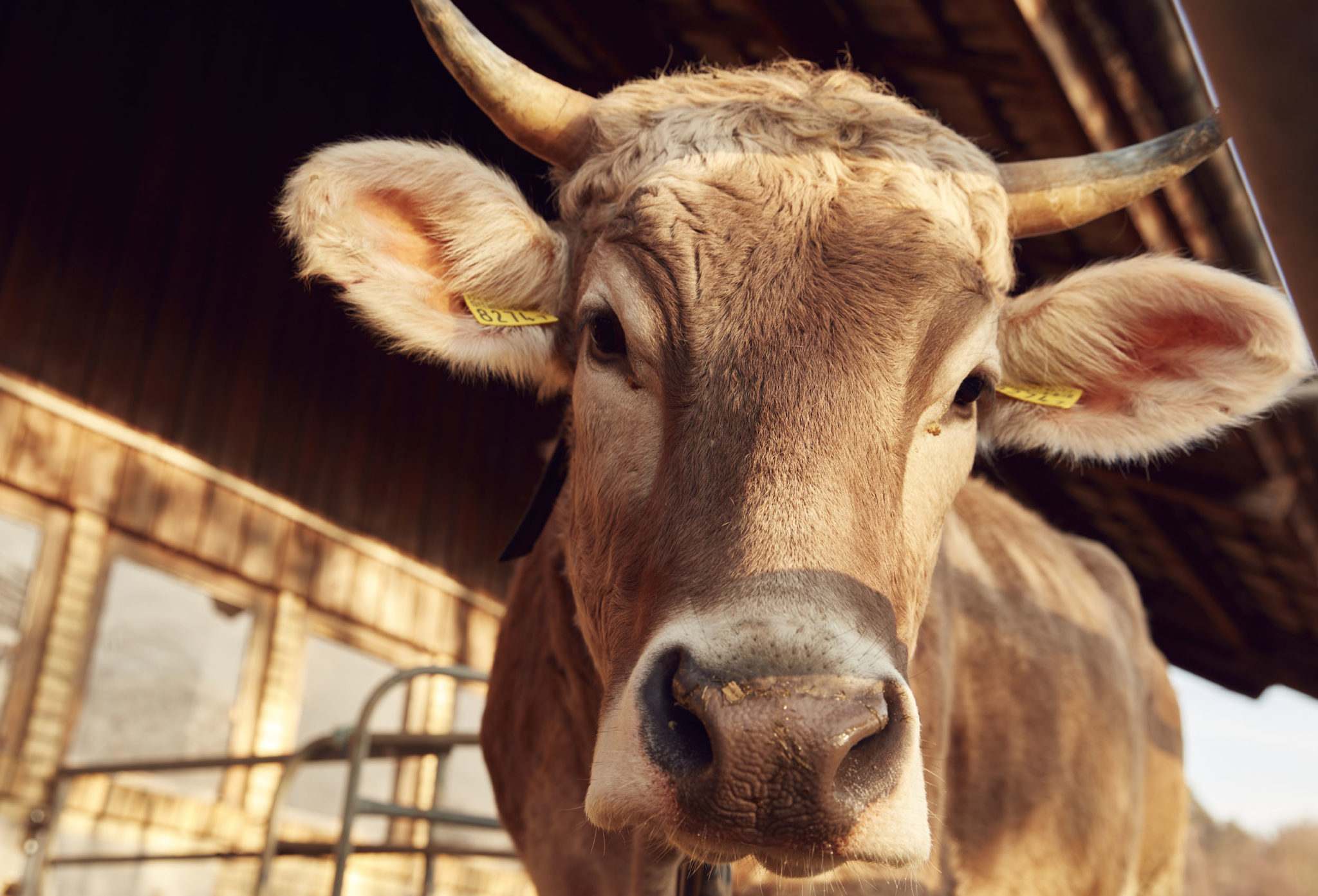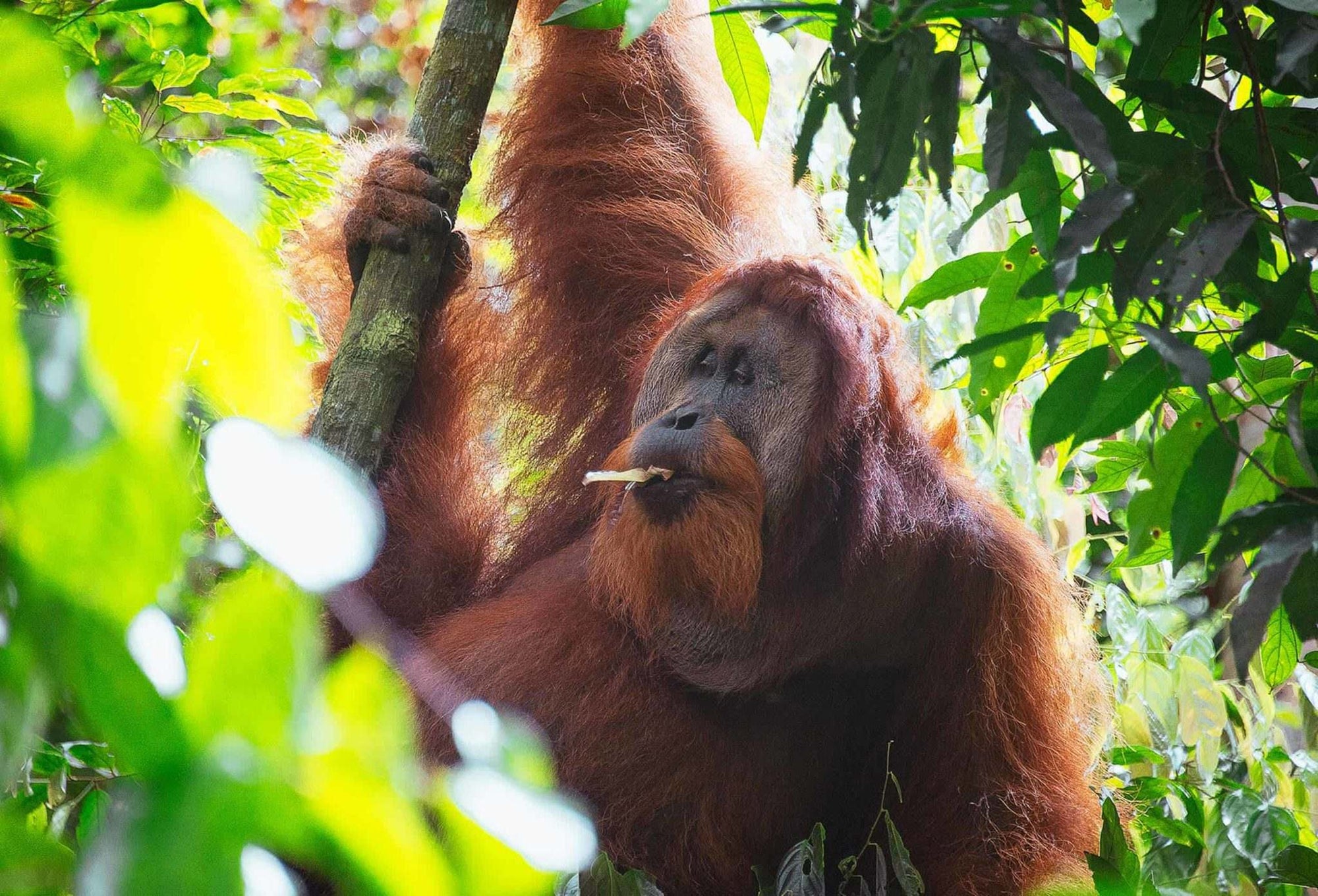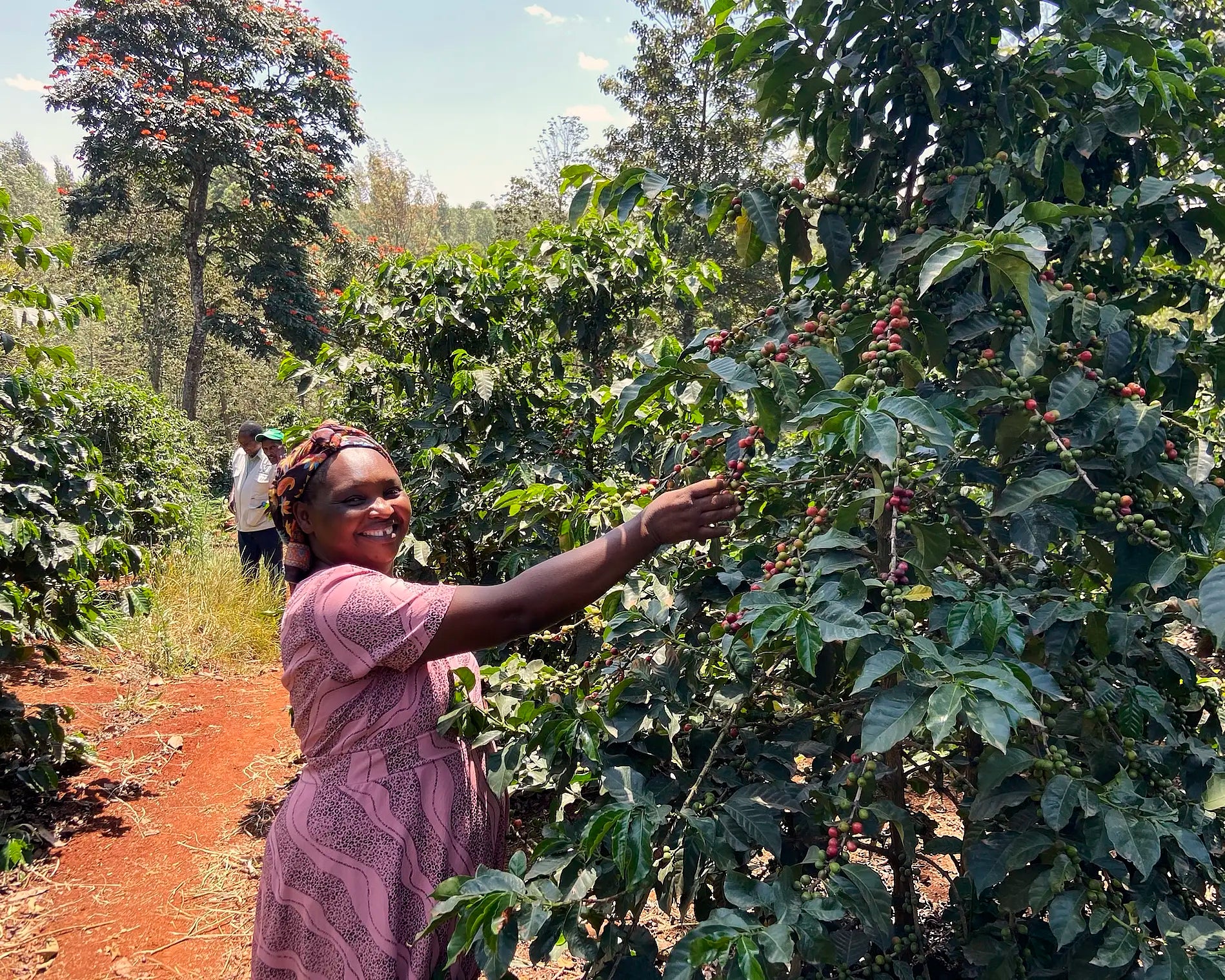 We walk towards Birkenhof. It is one of those sunny, warm winter days that have become typical of early 2020. We enjoy the sun, talk about our supposed UV deficiency, and wish for a daily lunch stroll. But the sun’s bright rays are somewhat ominous. A stork stands on the roadside in the moorland. What does a migratory bird do here? We saw countless of his friends during our last visit to the Mondul Coffee Estate , where they normally spend their winters. We finally reach the Birkenhof and are received by Martin and Andreas Pfister. They run the farm together with the other family members. Our first question is about the stork. Martin confirms that many storks have decided to stay in the Zurich Oberland this year. One can only speculate about the reasons; no doubt climate change comes into play.
We walk towards Birkenhof. It is one of those sunny, warm winter days that have become typical of early 2020. We enjoy the sun, talk about our supposed UV deficiency, and wish for a daily lunch stroll. But the sun’s bright rays are somewhat ominous. A stork stands on the roadside in the moorland. What does a migratory bird do here? We saw countless of his friends during our last visit to the Mondul Coffee Estate , where they normally spend their winters. We finally reach the Birkenhof and are received by Martin and Andreas Pfister. They run the farm together with the other family members. Our first question is about the stork. Martin confirms that many storks have decided to stay in the Zurich Oberland this year. One can only speculate about the reasons; no doubt climate change comes into play.  Martin and Andreas show us the farm. It consists of pastures, fields, forest and a swamp area (where the stork stood). All in all, it’s about 70 hectares big. The Pfisters form a business partnership with the Heusser-Feisthammel family from Nossikon. This network, which has existed for years, conserves resources. In this way, the two families share the infrastructure and operating costs.
Martin and Andreas show us the farm. It consists of pastures, fields, forest and a swamp area (where the stork stood). All in all, it’s about 70 hectares big. The Pfisters form a business partnership with the Heusser-Feisthammel family from Nossikon. This network, which has existed for years, conserves resources. In this way, the two families share the infrastructure and operating costs.
Martin wants his farm to be understood as a cycle. The cows feed on the grass, either fresh in the summer, from the silo (fermented) or as hay in the winter. Then there are the peas, which are also grown on the farm and are a protein source for the animals. The family can exclusively feed their cows with feed that they produce themselves. Only salt and part of the organic fertiliser for the fields are purchased. Martin’s long-term goal is to further enrich the hummus layer. The younger generation, Andreas and his brother Christian, are also moving in the same direction: they want to restore the swamp area in the southwestern part of the courtyard to its original state. An undertaking that requires further extensification.

We are approaching the stable. Currently, 68 dairy cows live on the farm. The number of cows depends on the food supply that the farm can produce itself. If it was a tough season for growing protein-rich peas, grass and corn, the number of cows that are being kept must be reduced slightly during the winter. The Birkenhof cows produce around 20 liters of milk a day. This equates to around 71 medium-sized flat whites. Compared to other, more optimised breeds, this is a rather poor performance. The cows that live here are a bit smaller and stockier in build, and don’t have very big udders. Their physique makes it easier for them to move around in the hilly courtyard and makes them more resistant to diseases – essential if you want to keep the use of medication to an absolute minimum. While the cows are outside, data is continuously transferred to an app. In this way, the young agronomist and his father actively monitor the animals’ chewing rates – even in the ETH lecture hall, if need be.

In the stable we also talk about the cows’ horns. We count five animals with horns. Martin explains that he can only keep a limited number of cows with horns in the current space. If more cows were to wear their horns, the other animals would face a bigger risk of injury. He confirms that this issue needs further consideration. When he took over the farm in the mid-1980s, playpens were the latest advancement in terms of animal welfare. Cows could move freely, but at the same time their horns became a risk. Today, 30 years later, you would have to build a new playpen with wider aisles. A possible project for the next generation. Andreas nods.

Back to the “operating philosophy” of the Birkenhof. The idea of the low-input system is closely related to thinking in cycles. The aim is to achieve an average yield using local resources. This is in contrast to a high-input system, where lots of resources is transported to a farm in order to maximise the yield (fertilisers, concentrate, water, etc.). According to Martin, soils in Switzerland make a low-input system possible. The good quality of the hummus, the air and the water make it possible to achieve a good yield with little additional means. The resources required for cultivation does not have to be transported from far away, and intensification is not necessary. It is a different story in, for example, southern Spain. Although there is plenty sunshine in that region, the soil provides less nutrients and water is in short supply and it’s necessary to bring in production resources from the outside.  The Birkenhof is a perfect match for ViCAFE due to their focus on organic practises. However, we also realise that more work needs to be done. The Pfister family accepts the challenges that need to be addressed. They critically scrutinise their work and look for solutions that take everything that’s affected into consideration: people, animals and nature. Just like the Pfister family, we are convinced that hardly anything is perfect. Instead, we must work together to enable continuous improvement. It’s therefore very fitting when, towards the end of our conversation, Andreas mentions his wish to grow soy on the farm so that it can be further processed into soy milk. A discussion that we love to engage in. We look forward to growing a closer partnership with them. And if you feel like having a flat white right now, read our post on foaming milk.
The Birkenhof is a perfect match for ViCAFE due to their focus on organic practises. However, we also realise that more work needs to be done. The Pfister family accepts the challenges that need to be addressed. They critically scrutinise their work and look for solutions that take everything that’s affected into consideration: people, animals and nature. Just like the Pfister family, we are convinced that hardly anything is perfect. Instead, we must work together to enable continuous improvement. It’s therefore very fitting when, towards the end of our conversation, Andreas mentions his wish to grow soy on the farm so that it can be further processed into soy milk. A discussion that we love to engage in. We look forward to growing a closer partnership with them. And if you feel like having a flat white right now, read our post on foaming milk.



